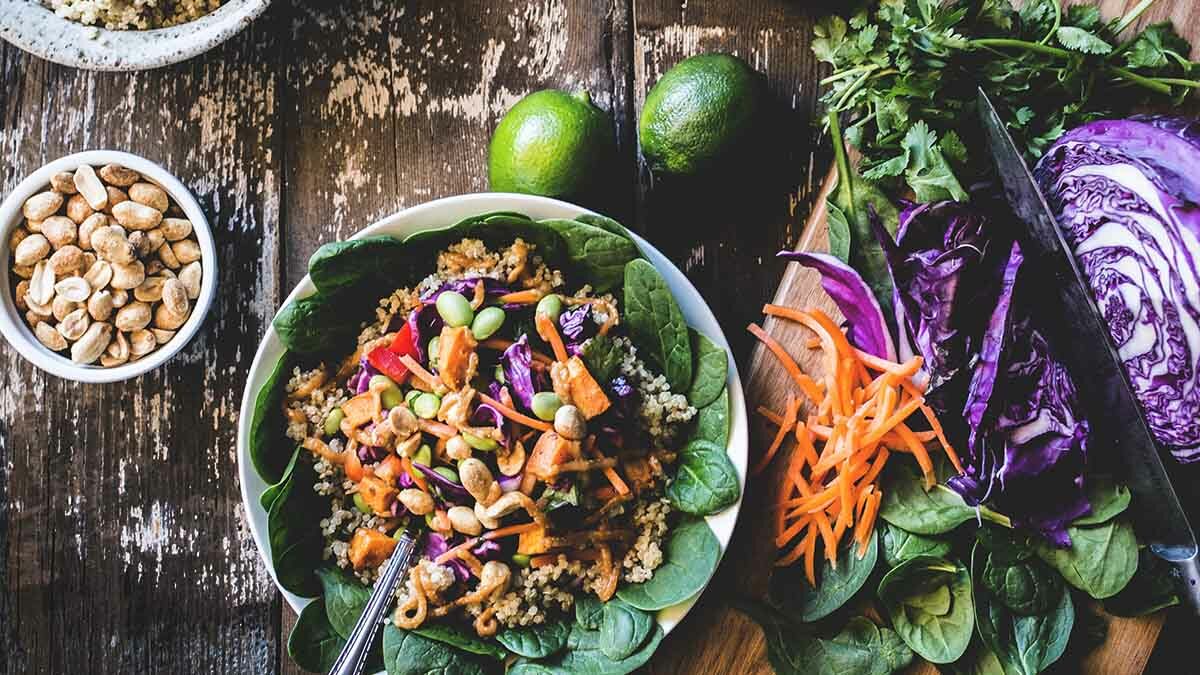Why do centenarians—those who live to be over a hundred years old—escape cancer? As you can see in my 3-min. video IGF-1 as One-Stop Cancer Shop, as we get older our risk of getting and dying from cancer grows year by year until we hit about 85 or 90, and then cancer risk starts to drop. It seems that centenarians are endowed with a particular resistance to cancer. So what’s their secret?
Every day, 50 billion of our cells die, and every day, 50 billion new ones are born. There’s a balance. Otherwise your body would shrink or get too crowded. Sometimes we need grow, like when we’re a baby or for that growth spurt around puberty. Our cells don’t get larger when we grow up; they increase in number. A child’s hand may only be made up of about 50 billion cells and may have to add half trillion or so while growing up.
Once we’re all grown up, though, we don’t want a lot of extra cells hanging around. We still need our cells to grow and divide, but out with the old and in with the new. We don’t want to be making more cells than we’re putting out to pasture. When you’re a kid, extra growth can be good; when you’re an adult, extra growth can mean a tumor.
How do our cells know when to tip the scale in favor of more dividing with less dying and when to come back into balance? A key signal is IGF-1, a growth hormone called insulin-like growth factor number one. IGF-1 levels go up when you’re a kid so you grow and then come back down when you’re done growing. Should your levels stay a bit too high as an adult, though, there’s a constant message sent to your cells to grow, grow, grow, divide, don’t die, keep going, keep growing. Not surprisingly, the more IGF-1 we have in our bloodstream, the higher our risk for many types of cancer.
When you’re a kid, growth is good, but too much growth when we’re all grown up can mean cancer. In my 90-second video, Cancer-Proofing Mutation, I describe Laron Syndrome, a type of dwarfism caused by congenital IGF-1 deficiency. Those affected don’t have that IGF-1 spurt in childhood so they grow up short-statured, but not having an excess of IGF-1 in their systems as an adult makes them nearly cancer-proof. This raises the question of whether one can achieve the best of both worlds by ensuring adequate IGF-1 levels during childhood and then suppressing excess growth promotion in adulthood. This can be done with a plant-based diet as I described in my last blog posts Cancer-Proofing Your Body and Treating an Enlarged Prostate With Diet, as well as in my 4-min. video The Answer to the Pritikin Puzzle.
Who is Pritikin? See Engineering a Cure. What’s the puzzle? See Ex Vivo Cancer Proliferation Bioassay. The binding protein findings I describe in the video may explain the findings in Is It the Diet, the Exercise, or Both?
–Michael Greger, M.D.
PS: If you haven’t yet, you can subscribe to my videos for free by clicking here and watch my full 2012 – 2015 presentations Uprooting the Leading Causes of Death, More than an Apple a Day, From Table to Able, and Food as Medicine.
